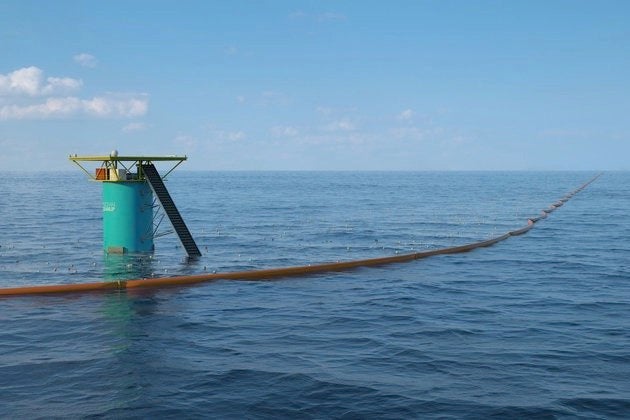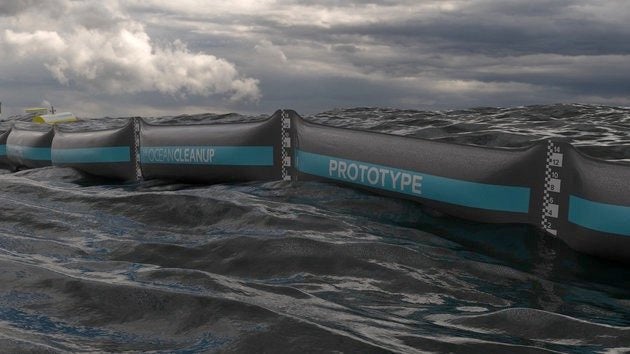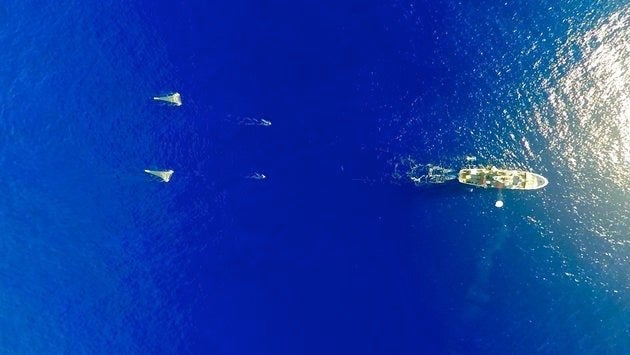According to Boyan Slat, the Dutch wunderkind who founded The Ocean Cleanup, we are living in the “Plastic Age.”
With around 300 million tonnes of plastic produced annually, lots and lots and lots of plastic (over 8 million tonnes, to be precise) ends up in our rivers, lakes and oceans.
A report at the January 2016 World Economic Forum warned that by 2050, there will be more plastic in the oceans than fish (by weight). This is terrifying stuff.
22-year-old Slat is on a mission to change the world: he dropped his aerospace engineering degree in 2013 to start The Ocean Cleanup Project, which focuses on developing advanced technologies to tackle the problem of plastic in the world’s oceans.
“There are multiple reasons why current plastic pollution researchers believe we should focus on prevention, for example through education, rather than attempting a cleanup operation, because we would need to deal with five colossal areas, each moving around, plastic sizes ranging from these massive ghost nets to molecules - bycatches and emissions,” Slat explained in his October 2012 Tedx Talk.
Since trash accumulates in five ocean garbage patches - the largest one is between Hawaii and California - cleanup using nets and vessels would take thousands of years.
Thankfully for the planet, Slat came up with an ambitious plan to solve the problem in far less time than that.

The Big Idea
Once Slat starting thinking about the problem of plastics in oceans, he couldn’t stop, so he headed to Greece with an ultra-fine manta trawl net in tow instead of clothes (he only had so much baggage space) and soon discovered that there are 40 times more of the tiny particles of plastic in the water than there are larger ones.
He then set about figuring out how to get rid of the tiny plastic particles without removing essential plankton from the oceans. They can be separated out with centrifugal forces - easy enough.
Since Slat subscribes to the mantra that he doesn’t “believe you can’t clean up something you don’t know the size of,” he used the expertise of Dutch university professors to determine exactly how much plastic there really was in the top layers of the gyres.
The result was scary: 7.25 million tonnes of extractable plastic in 2020 - equivalent to the weight of 1,000 Eiffel Towers.
Slat had a plan: orchestrate a mass-scale cleanup of the Great Pacific Garbage Patch. And not to be overzealous or anything, but he determined to do it all in just a decade, at a fraction of the cost of traditional methods using nets.

The North Sea Prototype
After an extensive 528-page feasibility study in 2014, a 30-vessel research expedition in 2015 to produce a hi-res map of the Great Pacific Garbage Patch and scale model testing, The Ocean Cleanup Project was ready to start testing.
After securing €1.5 million in funding from the Government of the Netherlands and marine contractor Boskalis, as well as an anonymous philanthropist, on 22nd June, 2016, the organisation unveiled the first prototype of its North Sea ocean cleanup system.
A large, passive, floating barrier structure that’s 100 metres long was situated 23 km off the Dutch coast, to act as an artificial coastline and passively catch ocean debris.
Entirely powered by the ocean’s natural currents and the wind, floating bits of plastic are pushed into screens which extend from the barriers.
The solid screens allow sea life to pass underneath but catch the floating plastic - anything between 35 to 100 millimetres in size.
The v-shape of the array pushes the plastic towards the central part of the structure to be collected and processed, after which it will be shipped to land and sold as recycled material so the entire operation becomes self-sustainable.
The prototype will test the survivability of the design, in preparation for a pilot installation in 2017 and the planned cleanup of the Great Pacific Garbage Patch, launching in 2020.

What’s Next?
In August 2016, after two months of enduring strong waves and gales, the barrier in the North Sea suffered some damage and is currently being fixed and optimised, so that all tweaks (like fixing the falling shackles that connect the barrier to the permanent mooring system) are cleared up in the design of the prototype.
Next up for the organisation is an aerial expedition- the first of its kind - in September and October 2016 of low-speed, low-altitude flights across the Great Pacific Garbage Patch in a C-130 Hercules aircraft, so that researchers and state-of-the-art sensors can accurately measure the biggest pieces of debris in the ocean in order to help determine future design, logistics and cost.
To date, Slat has received numerous awards and accolades for his work, including becoming the youngest-ever recipient of the UN’s Champion of the World environmental accolade.
This ambitious project is sure to be making waves for the next decade and more as Slat continues his pursuit of plastic-free waters. As he so aptly puts it:
“When talking about environmental issues in general, a common response is, ‘Well, that’s a long way off, that’s for our children to worry about.’ Hello, here I am.”